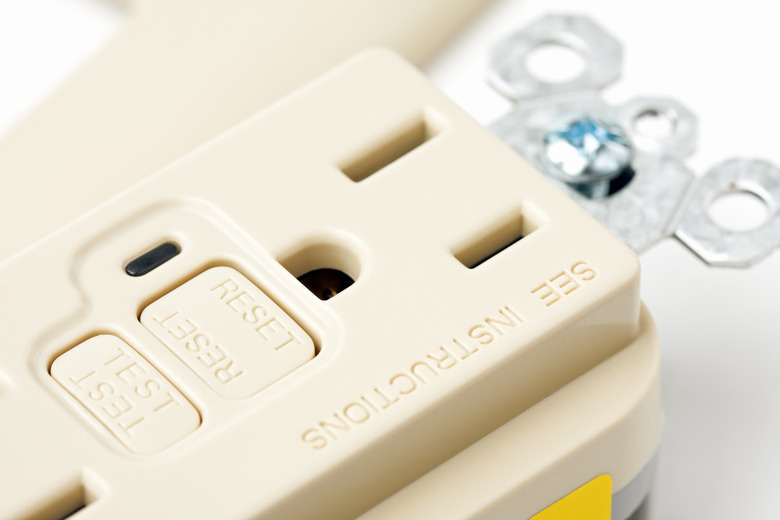How To Reset A GFCI Outlet
The ground-fault circuit-interrupter (GFCI) receptacle was introduced in 1961, and the National Electrical Code (NEC) was quick to adopt it, requiring GFCIs first in exterior, bathroom and garage outlets and then in basements and near sinks and kitchen countertops. Today, there are few locations that aren't required to be GFCI-protected. Sometimes improperly identified as a GFI outlet, which is a poor choice of acronym because it neglects the fact that it's the current that gets interrupted, a ground-fault outlet is easily recognizable by the two buttons on its faceplate. One of these is a test button (the top one), and the other is the button you press to reset the receptacle when it trips.
Some GFCI receptacles are color-coded, and on these, the test button is black, and the reset button is red. When the outlet trips and cuts power, you should be able to reset it by pushing in the red (bottom) button. If it clicks and stays in, you're good to go, but sometimes it doesn't, and there is more than one possible reason for this.
The Function of a Ground-Fault Outlet
In the early days of electricity, which weren't that long ago, it was easy to get a shock because switches and outlets weren't grounded, and when residual electricity collected around one and you touched it, the electricity would use your body as a ground path. This situation persisted until the 1960s, when the NEC began requiring grounding for all residential and commercial circuitry, but it didn't solve an important problem. What happens when wiring is faulty or deteriorating to the point at which someone can come in contact with a live wire? In that case, even though the circuitry is grounded, the person becomes the preferential grounding path and gets a serious — and possibly fatal — shock.
The GFCI outlet was designed to protect against this eventuality. It contains a current sensor that can detect even a small surge, such as those that would be caused by electricity suddenly flowing through someone's body, and a circuit breaker that trips and cuts power when the sensor detects the surge. A person coming in contact with a live wire might still get a shock, but it will be a momentary one that's unlikely to cause injury.
I Can't Reset My GFCI Outlet
Current has to be available in the circuit for the reset switch to stay in, so if you can't reset your GFCI outlet, the circuit is probably dead. The first thing to check is the circuit breaker for the circuit because it may have tripped along with the outlet. If the outlet stopped working and the breaker has not tripped, the most likely problem is that another GFCI outlet on the same circuit has tripped.
Although there's really no reason for it, homeowners often wire multiple GFCI outlets on the same circuit. This is overkill because a single GFCI will protect all the outlets wired after it in the circuit, but since the NEC requires GFCIs in so many places, DIY homeowners often overdo it. If you can't reset the GFCI in the bathroom, look for another tripped GFCI in another room, in the basement or outside. Once you find the culprit and reset it, you'll be able to reset the one in the bathroom.
A GFCI Outlet Trips Repeatedly
Sometimes, you're able to reset a GFCI outlet, but as soon as you plug in an appliance and try to use it, the outlet trips again. This may indicate a problem with the appliance that calls for repair, but it could also be caused by wet conditions around the outlet. Water may be dripping onto the outlet, and in some cases, even high humidity can cause repeated tripping. If you can't find a way to dry out the outlet, you might have no alternative but to stop using it until things dry out on their own.
